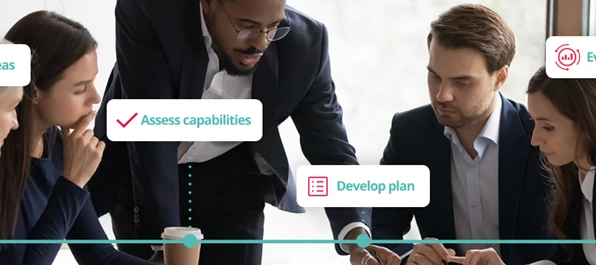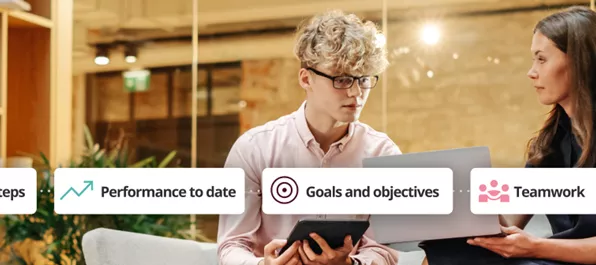-
- Employee Benefits
- Employee benefits
- Employee engagement
- Employee rewards
- Employee wellness hub
- Caboodle
-
- Your Stakeholders
- HR Director
- IT Director
- Finance Director
-
- Resources
- Guides and whitepapers
- Blogs
- Webinars
- Case studies
-
- Contact Us
- Contact Us
- Partner Programme
HR systems: a complete guide
What are the different types of HR systems, how do they work to streamline core HR processes and which system is best for your business?
A HR system on a basic level is a tool that organisations use to manage employees and their information. In practice, this includes the ability to manage operational workforce management processes like absence, rostering and scheduling and onboarding, as well as a secure way to store employee data. The ultimate goal of an HR system is to automate and streamline HR processes and make workforce management as easy as possible. More sophisticated HR systems, like PeopleXD, will provide a complete end-to-end solution including functionality to support recruitment, reward and recognition and talent management.
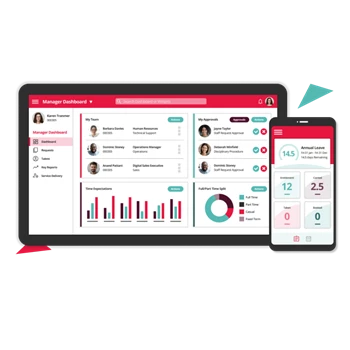
What should a HR system include?
A HR system is used by a range of stakeholders, including employees, HR professionals, line managers and potential candidates.
In addition to basic administrative functionality to manage business and employee data, there are a number of essential features which a future-proofed HR system should offer to streamline common processes. These include:
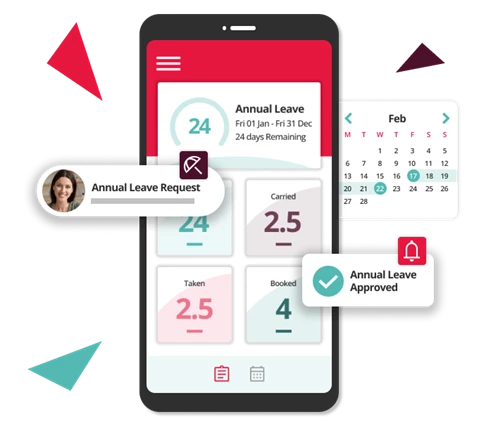
What are the three types of HR systems?
The three main types of HR system loosely fall into three categories: HRIS, HCM and HRM.
HRIS – Human Resource Information System
A HRIS is a HR system that manages all of your core HR processes, data and policies in one place. This will usually include self-service functionality and reporting and help automate core HR processes, as well as support recruitment, applicant tracking, absence management and training.
HCM – Human Capital Management
A HCM system usually includes all aspects found in a HRIS but also includes talent management, onboarding, performance management, succession planning and analytics.
HRMS – Human Resource Management System
The HRMS typically features most of the functionality included in HRIS and HCM software, but with integrated payroll and workforce management or time and attendance capabilities like rota scheduling and ability to clock-in and out.
It’s important to note that these three variants can sometimes be used interchangeably by HR system vendors, so you’ll need to clarify that your solution includes all of the features needed to support your objectives.
Our integrated HR software, PeopleXD, gives organisations access to a connected suite of people management tools in a uniquely flexible end-to-end HR system, meaning you get the features you need right now, but have the ability to scale-up as you grow.
Broader HR processes supported by an HRMS
Workforce management
HR systems with a workforce management module allows you to achieve a joined-up approach to managing core operational HR processes. This is crucial for streamlined onboarding, absence management, time and attendance and rostering.
Payroll
Human Resource Management systems which integrate with payroll help to simplify payroll processes and ensure full transparency, efficiency and compliance. With seamless integration with the rest of an HR system, people and payroll data are fully connected. An integrated payroll module helps reduce risk and ensures employees are paid on time, every time.
Talent management
An HR system with an integrated talent management module helps to attract, develop and retain your workforce of today and plan for the needs of tomorrow. This helps organisations to identify skills gaps, develop competencies, provide continuous feedback and recognition, and support succession planning.
Recruitment
When a HR system provides dedicated HR recruitment functionality, organisations can hire top talent in less than half the time. HR professionals can easily find everything they need to attract talent, track and manage candidates and reduce recruitment admin.
Reporting and analytics
Data is key to making informed and strategic decisions and ensuring your HR focus is both people-centred and business-oriented. With easy-to-understand charts, dashboards, and tailored reports, the best HR systems ensure you’re adding strategic value and making a real business impact.
What are the benefits of an HR system?
- Streamline HR with integrated tools: Automate manual processes with an HRMS that has everything you need joined up, in one place
- Empower your people: Remove bottlenecks, reduce queries and eliminate frustration with self-serve apps
- Increase productivity: HR systems save time and reduce paperwork
- Build a future-ready workforce: Attract, develop and retain talent
- Drive engagement: Build a culture of fulfilment, achievement and belonging
- Improved data visibility: All your HR analytics viewed the way you need it to make faster informed decisions
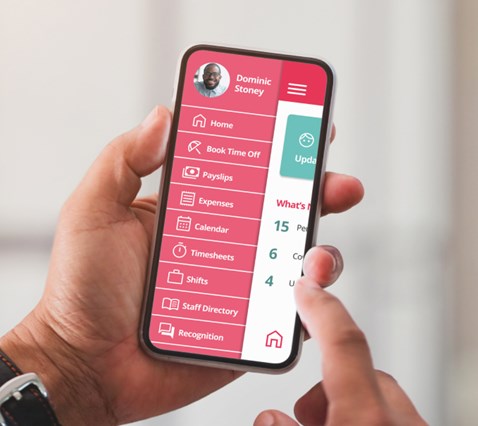
How much does a HR system cost?
The cost of a HR system is determined by a number of factors. A lot of out-of-the-box HR software for small businesses or those with straightforward requirements will be able to provide a monthly cost per employee.
For those larger and more complex organisations requiring significant flexibility, scalability and customisation from their HR software, a per user cost isn’t as easy to quantify without a more in-depth discussion about requirements. You don’t want to pay for what you won’t use – but equally, need to be reassured that your system is future-proofed and agile enough to scale with your organisation as it grows.
Whilst cost transparency will be important when looking at HR software pricing in order to help you manage budgets, sourcing a tech partner that can meet your needs now, and in the future should be a major consideration during the vendor comparison phase of your project.
If you’re a large or fast growing business, with complexities that can’t be met easily by out-of-the-box solutions, the immediate costs will only be part of the picture. Setting objectives for your new system, and understanding how you will measure return on investment will be important, and your HR software vendor should work with you to achieve these goals.
With our HR system PeopleXD designed for medium-large and growing organisations, the cost is largely dependent on the modules taken and whether the standard or premium versions are required so that you’re only paying for what you need, when you need it.
Find out more in our article 'How much does HR software cost?'
Request pricing for our HR system
What HR system is best for my business?
The type of HR system that is best for your business will largely depend on the size and complexity of your organisation, how developed your HR strategy is, and the stage your organisation is at in terms of digital transformation.
You should ask yourself what are your organisation’s operational and strategic HR objectives, now and looking to the future. The solutions that are best for your business will prioritise one or all of the following:
Drive digital transformation
A foundational, core HR solution like PeopleXD helps organisations drive digital transformation and automate HR tasks for greater simplicity, scalability and efficiency. A well-rounded HR system helps underpin strategic HR objectives, enabling organisations to become future-focussed and people-centric.
Future-proof talent
Modern HR systems include tools like talent management software, that help organisations to attract, retain and develop their talent. This might include a branded recruitment website, applicant tracking system, learning management and skills development tools, succession planning and performance and career development solutions.
Build an engaged workforce
Similarly, tools to help organisations build and support an engaged workforce are increasingly part of a strategic HR system. This might include tools to support feedback and build community, to those that facilitate recognition, reward and personal development. HR systems that support employee engagement may also include tools to support wellbeing and employee benefits.
Learn more about how to choose HR software for your business.
HR system FAQs
What does an HR system do?
A typical HR system includes the basic functionality that allows HR professionals to manage employee data and information. Many HR systems may also include features that allow HR professionals and employees to access and manage their own personal information, such as benefits, performance and time management, or requesting holiday.
More advanced integrated HR systems like PeopleXD offer all-in-one or modular capabilities to help effectively manage core HR processes in one place. Importantly, you can also get access to the tools needed to support strategic HR goals, like developing talent, succession planning, and driving engagement and recognition.
With the help of automation and streamlined workflows, HR systems are designed to help organisations manage their HR processes and employee data more efficiently.
Who uses HR systems?
HR systems are used by organisations of any size, across every sector. Whether that’s in construction or education, every industry needs a streamlined system to manage their people effectively.
The type of system required can vary depending on industry - for example in heavily regulated sectors or those that require a mix of functionality for both salaried and hourly rate staff. Considerations on the most appropriate HR system will also like be impacted by the complexity of organisation and how advanced their HR strategy is.
While HR systems may have previously only been used by HR professionals, this is no longer the case. Modern HR systems are used by HR professionals, employees, potential candidates and external stakeholders to complete a variety of processes and functions.
What’s the difference between a HRMS and a HRIS?
Both HRMS and HRIS systems typically include a range of tools and features that allow HR professionals to manage employee data and information, such as contact information, job titles, salary details, and performance evaluations. However, there are some key differences between the two.
An HRMS is a more comprehensive system that can provide support for a wider range of HR tools and features, such as payroll and recruitment, whereas an HRIS is typically more focused on basic data management. While HRIS systems may have the functionality for storing and organising employee data, they most likely won’t include as many features for managing other HR processes.
With that in mind, an HRMS can be thought of as a broader term that encompasses HRIS and other HR-related software tools, while HRIS is a specific type of HRMS that focuses primarily on managing employee data and information. That’s why a flexible HRMS such as PeopleXD is often the chosen solution for most organisations, where broader capabilities and complexities are required.
Speak to a product expert to see how our HR system can help your organisation
HR and payroll blogs
Our HR and payroll blogs offer advice and guidance from industry experts.






